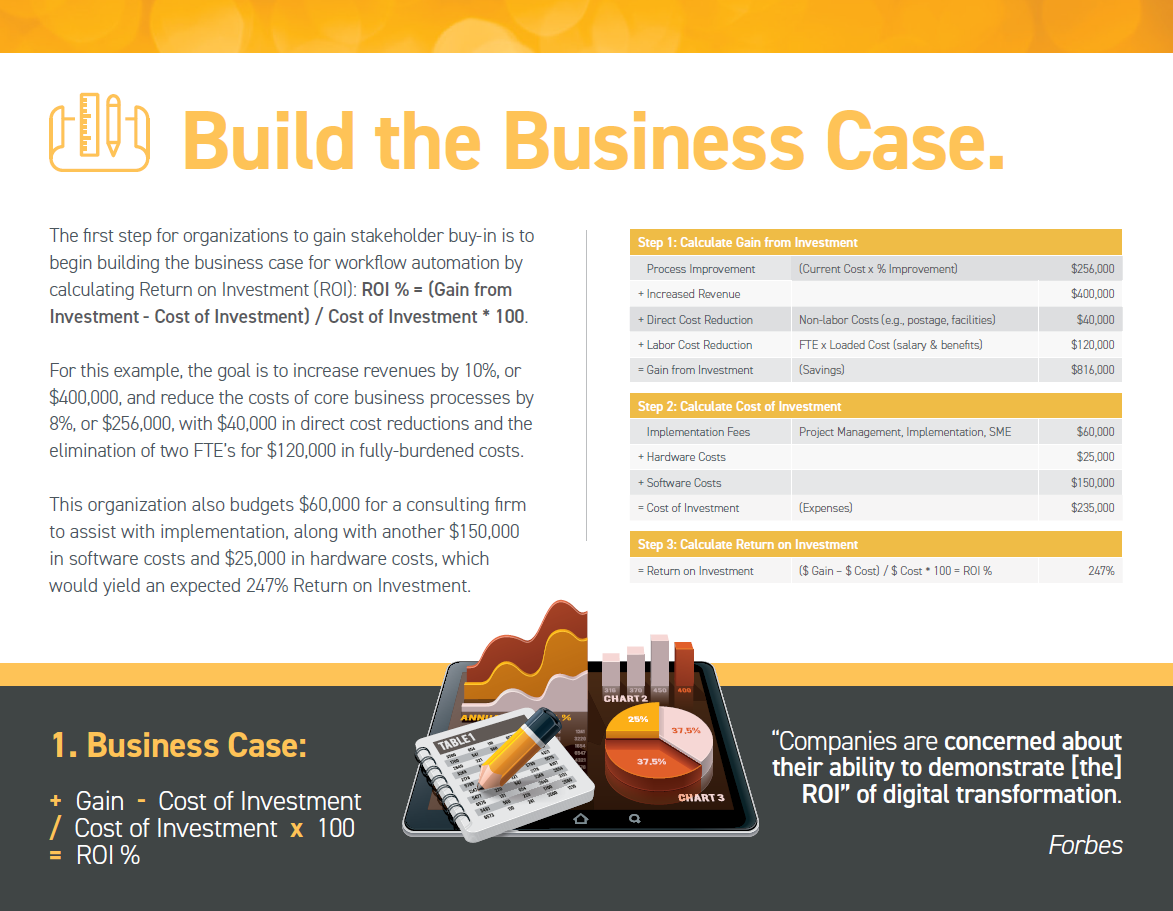Most of us know about broken processes because we’ve lived them. It doesn’t feel good to fill out that extra form with the same information you already put in the last form or wait 8 days for approval from someone on vacation…but beyond annoyance, what do these broken processes cost?
To answer this question, we’re going to borrow a term from the construction industry.
The ‘soft costs’ of doing business
In construction, costs are divided into two categories: soft costs and hard costs. Hard costs are the costs of actually getting the work done, mainly labor and materials.
Soft costs are considered indirect costs that don’t go towards getting the work done but are necessary anyways. This can include insurance premiums, legal fees, and other ‘extra’ costs that get tallied onto the project.
If you were to break down the costs of conducting your business into hard costs and soft costs, how would you do it?
For most companies, hard costs would be the work that goes into creating and delivering products and services to customers (what they get paid for). Soft costs would cover administrative tasks, project management, human resource management, and other ‘extra’ costs that are necessary to conduct business but don’t go directly towards delivering products or services.
Essentially, the soft costs support the hard costs so that business can run smoothly. But what happens when the soft costs start getting out of control?
When soft costs increase, hard costs increase too
When soft cost processes become broken, slow, or just plain dysfunctional, it affects hard costs too. For example, if you’re a sales rep and you have to manually remind your manager to approve quotes 9 times a day, it’s going to reduce your ability to actually sell products and services. Through workflow automation, companies can improve ROI on hard costs by removing bottlenecks that stem from repetitive work that raise soft costs.
Some examples of the soft costs of broken processes include:
- Reduced productivity from time spent doing things in a harder than necessary way.
- Time wasted in meetings talking about what went wrong yesterday, trying to figure out whether we took care of the thing that went wrong the day before, making plans to regain customer confidence, or trying to assign blame when people fall into the traps created by broken processes.
- Overly frequent check-ins as broken processes often lack the automation and transparency to ensure that people know whether or not things are getting done.
Just like in the sales rep example, all of these broken processes lead to more time and energy being spent in areas that don’t directly contribute to product/service delivery, customer satisfaction, and profits. The downward spiral continues as broken processes create more dissatisfied customers, leading to more time spent dealing with support issues and further decreases in sales.
Of course, soft costs are necessary and will never go away, but they can be reduced by improving processes.
Reducing soft costs with no-code workflow automation
Processes don’t break so much as they break down. Often, they deteriorate over time as workarounds become permanent or people give up trying to fight the system and improve. It’s also common for ‘outdated’ processes like relying on spreadsheets and paper-based systems to outlast their useful years simply out of habit.
The people who are best equipped to fix these processes are the people who execute them every day, that is if they believe they also have the power to fix them. This is the beauty of no-code workflow automation software like HighGear. In HighGear, employees can become ‘citizen developers’ and create workflows to do things the way they should be done. HighGear’s workflow software empowers employees to create and own processes that drive their organizations forward.
With easy-to-use tools for creating custom fields, workflows, forms, tasks, reports, and more, the people who do the work can finally design how the work gets done, no coding required. This also includes time-savers like automatically ‘routing work’ for approvals and check-ins and reminding process contributors of what’s waiting for them, making the status of tasks and projects visible in real-time, and other productivity boosting tools that reduce the amount of time spent on ‘soft cost’ activities – all of which produce significant ROI.
Get buy-in by showing off the ROI
Sometimes, an organization’s digital transformation agents face an uphill battle when it comes to reducing soft costs. It can be hard to convince people to change entrenched processes especially with IT professionals in short supply, but with HighGear, a strong business case can be made.
When presenting HighGear to your organization, it’s easy to make a case for the investment by showing off the high ROI you get from reducing the soft costs that have been holding you back for far too long.
On top of having a strong ROI, HighGear is also ‘IT-friendly’. Everything is contained within a single, highly secure and IT approved platform, rather than countless separate no-code applications that end users can create and implement ‘on the fly’ with other solutions.
By identifying areas where your soft costs are too high and calculating how much time and energy you could save with the improvements HighGear delivers, you’ll be able to win over your organization’s strongest digital doubters



